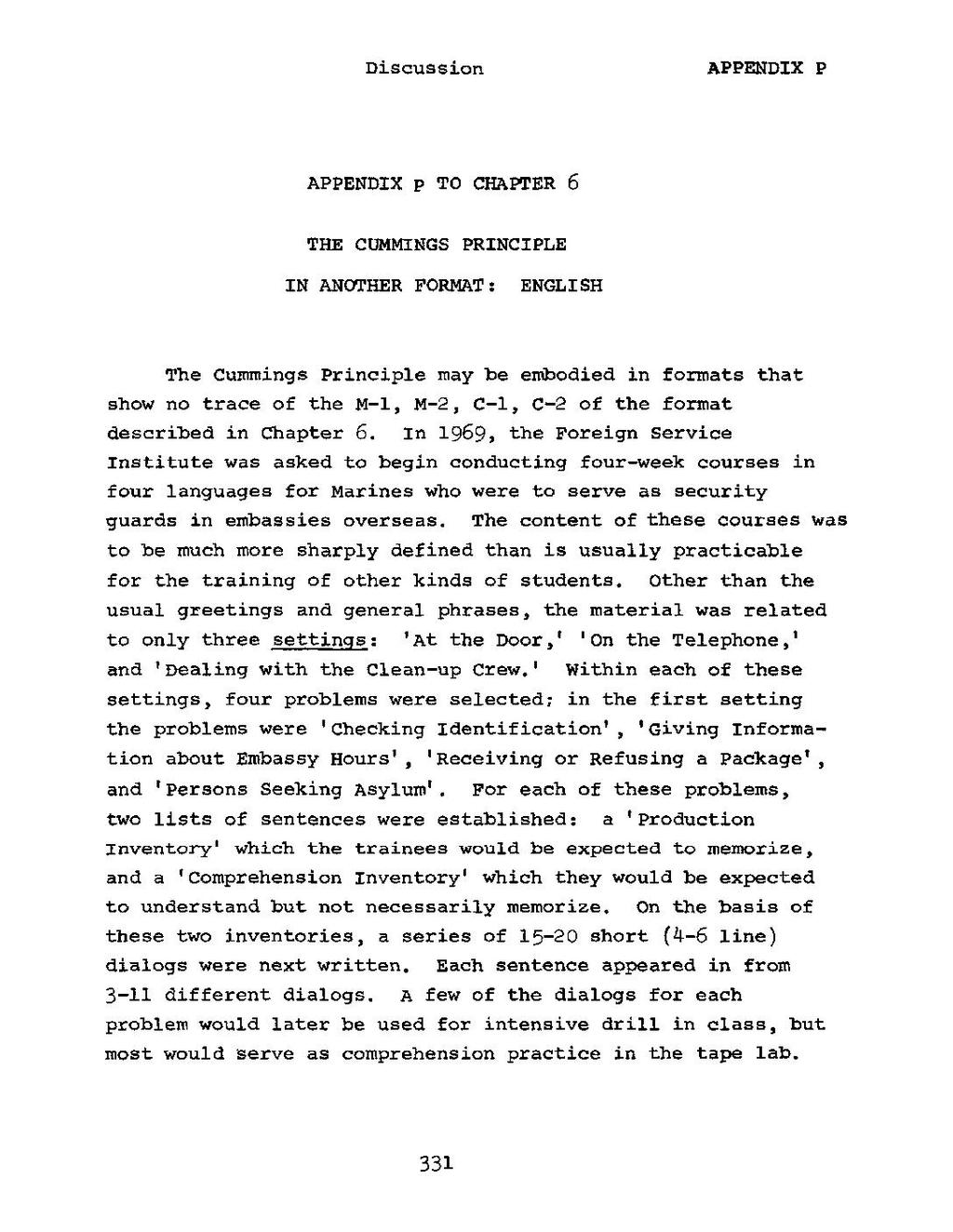APPENDIX P TO CHAPTER 6
THE CUMMINGS PRINCIPLE IN ANOTHER FORMAT: ENGLISH
The Cummings Principle may be embodied in formats that show no trace of the M-1, M-2, C-1, C-2 of the format described in Chapter 6.
In 1969, the Foreign Service Institute was asked to begin conducting four-week courses in four languages for Marines who were to serve as security guards in embassies overseas. The content of these courses was to be much more sharply defined than is usually practicable for the training of other kinds of students. Other than the usual greetings and general phrases, the material was related to only three settings: 'At the Door,' 'On the Telephone,'and 'Dealing with the Clean-up Crew.' within each of these settings, four problems were selected; in the first setting the problems were 'Checking Identification', 'Giving Information about Embassy Hours', 'Receiving or Refusing a Package', and 'Persons Seeking Asylum'. For each of these problems, two lists of sentences were established: a 'Production Inventory' which the trainees would be expected to memorize, and a 'Comprehension Inventory' which they would be expected to understand but not necessarily memorize.
On the basis of these two inventories, a series of 15-20 short (4-6 line) dialogs were next written. Each sentence appeared in from 3-11 different dialogs. A few of the dialogs for each problem would later be used for intensive drill in class, but most would serve as comprehension practice in the tape lab.
331
